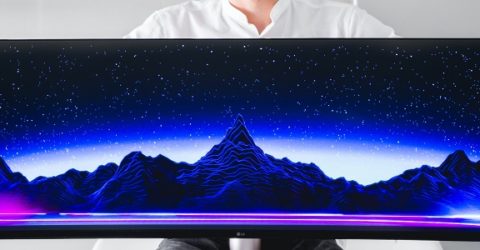You’re doing aspect ratio all wrong…
The optimal aspect ratio for streaming and gaming can affect everything from app design to your experiences as a consumer

Despite the internet’s growing maturity and ubiquity, the technologies underpinning it are still evolving at breakneck pace.
Consider the revolution in smartphone design since the Millennium, with monochrome text-only displays giving way to crystal-clear HD touchscreens.
However, this proliferation of incompatible devices has created a challenge for industries which rely on delivering an impressive visual experience.
Some aspects of online content have been standardised through endless development and collaboration. The JPEG file format is one; the HTML5 web coding standard is another.
Yet there is currently no industry standard for pixel resolutions and aspect ratios, which means the consumer experience often depends on the device being used.
Considering the huge efforts companies invest in delivering a consistent user experience to every end user, that’s clearly not ideal.
Defining the problem
If you’re reading this on a computer, you’re probably looking at a monitor which is configured to display content at 1920×1080 pixels.
The screen has 1,080 lines running from top to bottom, each containing 1,980 individual pixels.
Like many platforms, Microsoft’s Windows defaults to a landscape ratio of 16:9.
GuideWhat size computer monitor should I buy?
For every 16 horizontal pixels, there are 9 vertical ones – which gives us our 1920×1080 resolution.
By contrast, smartphones use an array of different pixel ratios, depending on their screen size.
There are 21:9 ratios (Sony Xperia 10), 2.21:1 (Huawei P50), 2.164:1 (Apple iPhone 12) and many others.
That’s before you get to folding handsets like the Samsung Galaxy Z Flip phone, which has an 8:3 external display in compact form and a 22:9 ratio once unfolded.
Almost every mobile device has portrait and landscape modes, with gyroscopic sensors detecting handset orientation and rotating automatically.
Programmers, streaming platforms and games developers have to choose an optimal aspect ratio for streaming and gaming which is consistent across all these platforms and many others besides.
Unusually in today’s mobile-oriented age, the widely-accepted compromise is one which suits desktop users the best…
Sweet 16
The 16:9 screen resolution has been adopted as an industry standard by platforms as diverse as TikTok, Netflix and YouTube.
Any streaming device can play content at this ratio, but it looks best on a TV or monitor, where most of today’s games console titles and processor-intensive games appear.
It’ll look decent on tablet devices, which tend to have a 4:3 aspect ratio, often leaving space for touchscreen controls below the footage being displayed.
Results vary on smartphones. On a 19.5:9 or 21:9-ratio screen, unattractive black bars flank displayed content, resembling those seen when a cinematic release is broadcast on TV.
GuideHow to use dual-screen display on Windows
Conversely, the more immersive and ultrawide 21:9 ratio looks fantastic on a compatible smartphone or specialist monitor, if less impressive on a standard screen.
It’s increasingly being adopted by gamers seeking a more immersive experience, and it’s closer to the 2.39:1 anamorphic ratio used in widescreen cinematic releases.
While 21:9 is growing in popularity, 16:9 remains the optimal aspect ratio for streaming and gaming – for now, at least.






